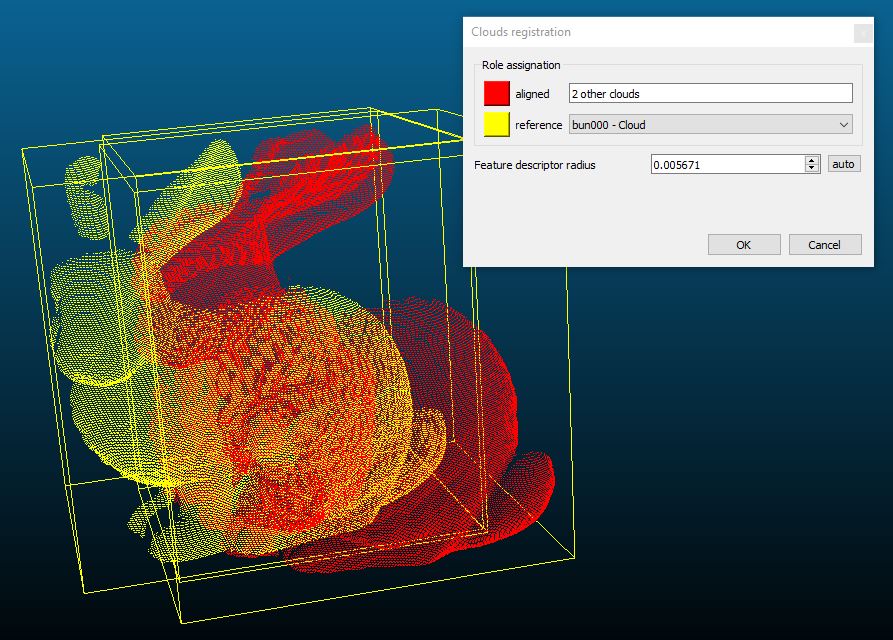Fast Global Registration
Menu / Icon
This tool is accessible via the ![]() icon in the 'PCL wrapper' toolbar or via the 'Plugins > PCL wrapper > Fast Global Registration...' menu entry.
icon in the 'PCL wrapper' toolbar or via the 'Plugins > PCL wrapper > Fast Global Registration...' menu entry.
Description
The Fast Global Registration algorithm has been introduced in: Q.-Y. Zhou, J. Park, and V. Koltun, "Fast Global Registration", ECCV, 2016
It allows for fast global registration of partially overlapping 3D surfaces. They don't need to be already roughly registered (contrarily to algorithms such as ICP).
The clouds must have normals (properly oriented).
Procedure
Select the at least two clouds that you want to register and start this tool.
One cloud will be the 'reference' cloud, and all the others will be aligned relatively to this reference cloud.
The reference cloud can be chosen among the clouds that were selected when launching the tool via the drop-down list next to the 'reference' yellow box.
You'll see in the 3D view that the selected cloud colors are forced to yellow or red (depending on whether they are either the 'reference' cloud - in yellow - or an 'aligned' cloud - in red).
Main parameters
The only parameter of this algorithm is the Feature descriptor radius. It is used to compute the feature descriptors (of dimension 33!) around each point, so as to be able to match them with points having a similar descriptor in the other clouds. The larger the radius is, the more accurate the descriptor will be. However, the longer the computation time will be... Mind also not to set a too high value as the local cloud shape should remain 'simple'.
You can use the 'auto' button to get an estimate of what a suitable radius should be. It may still be necessary to manually increase this number if the results are not satisfactory.
Result
The algorithm might take some time to converge as the feature descriptors computation might be computation intensive. On completion, the 'aligned' clouds will be automatically transformed so as to (hopefully) get closer to the reference cloud.
Each individual registration matrix can be retrieved in the Console (or via the 'History matrix' section of the cloud properties, if no other transformation was applied prior to calling this tool).
